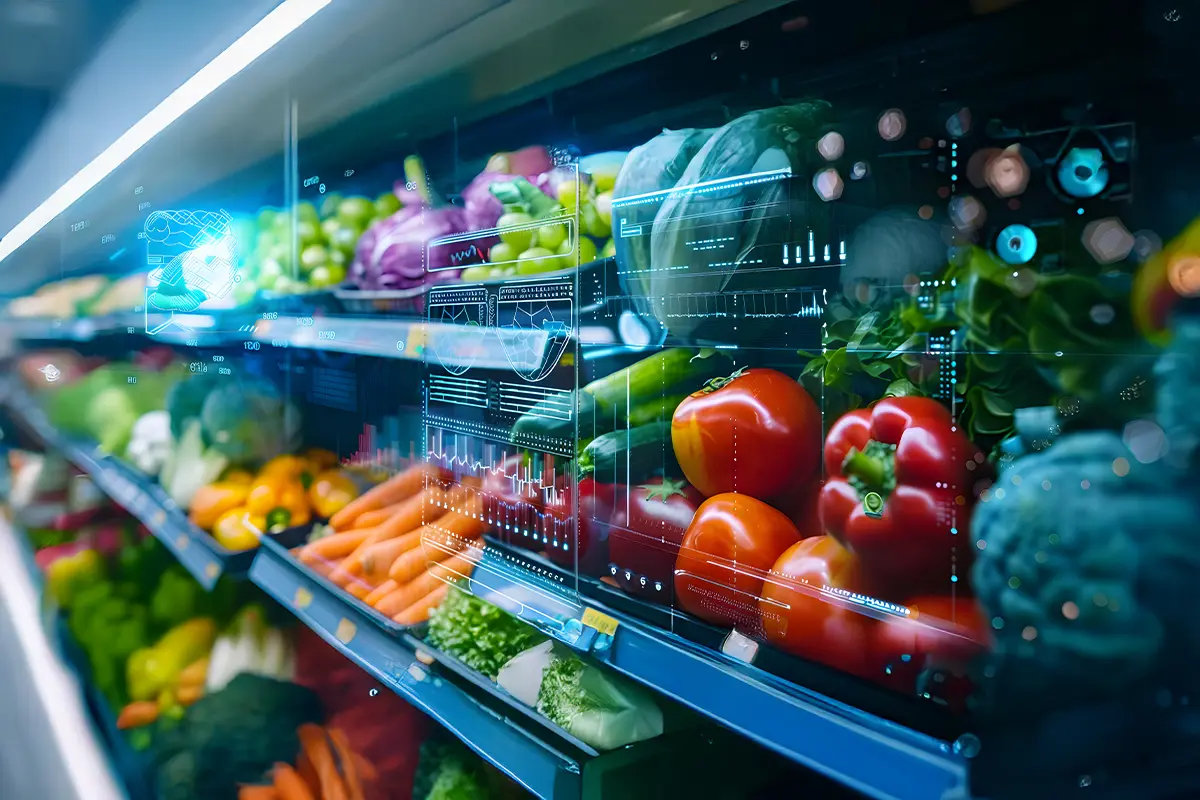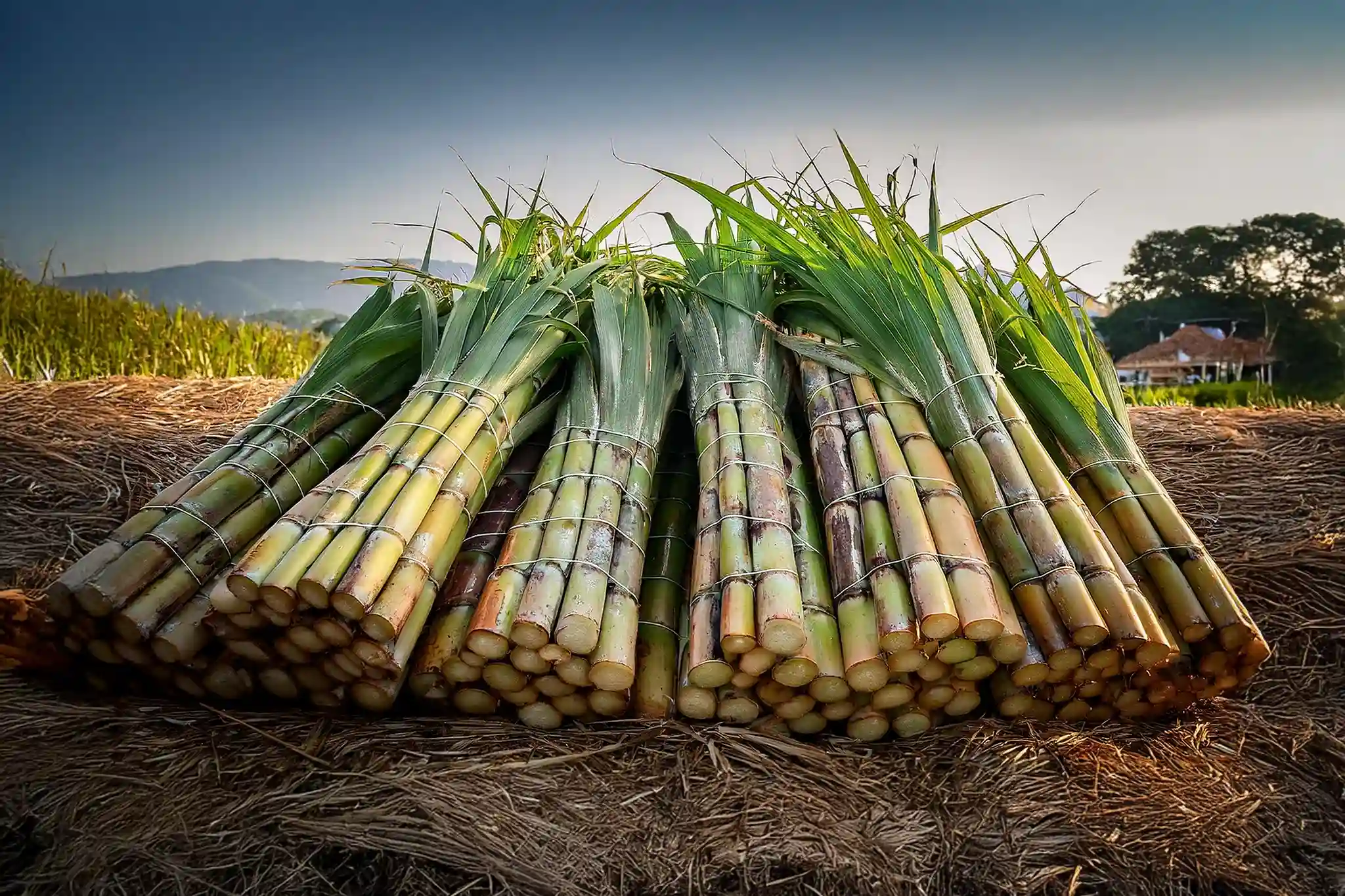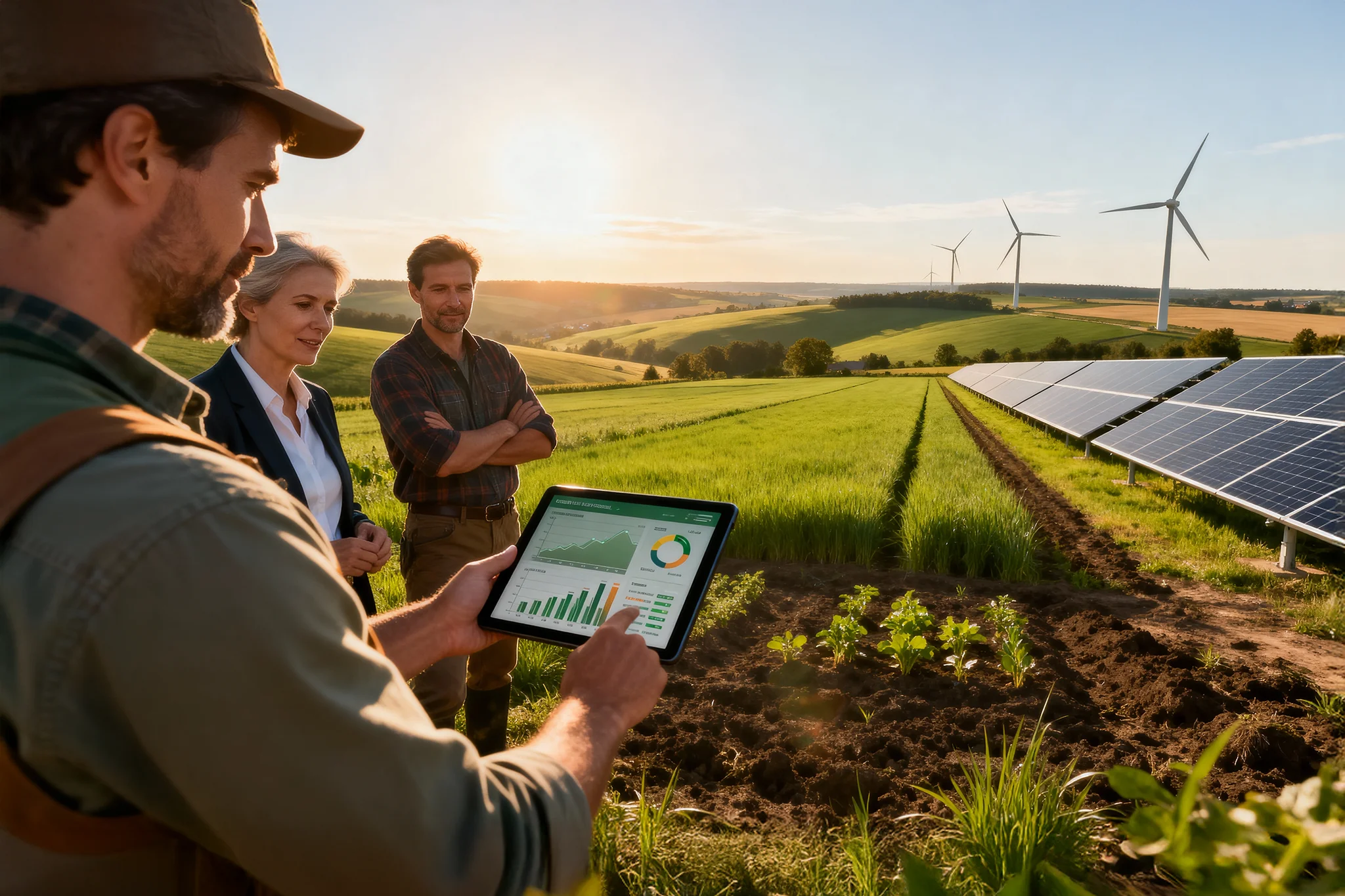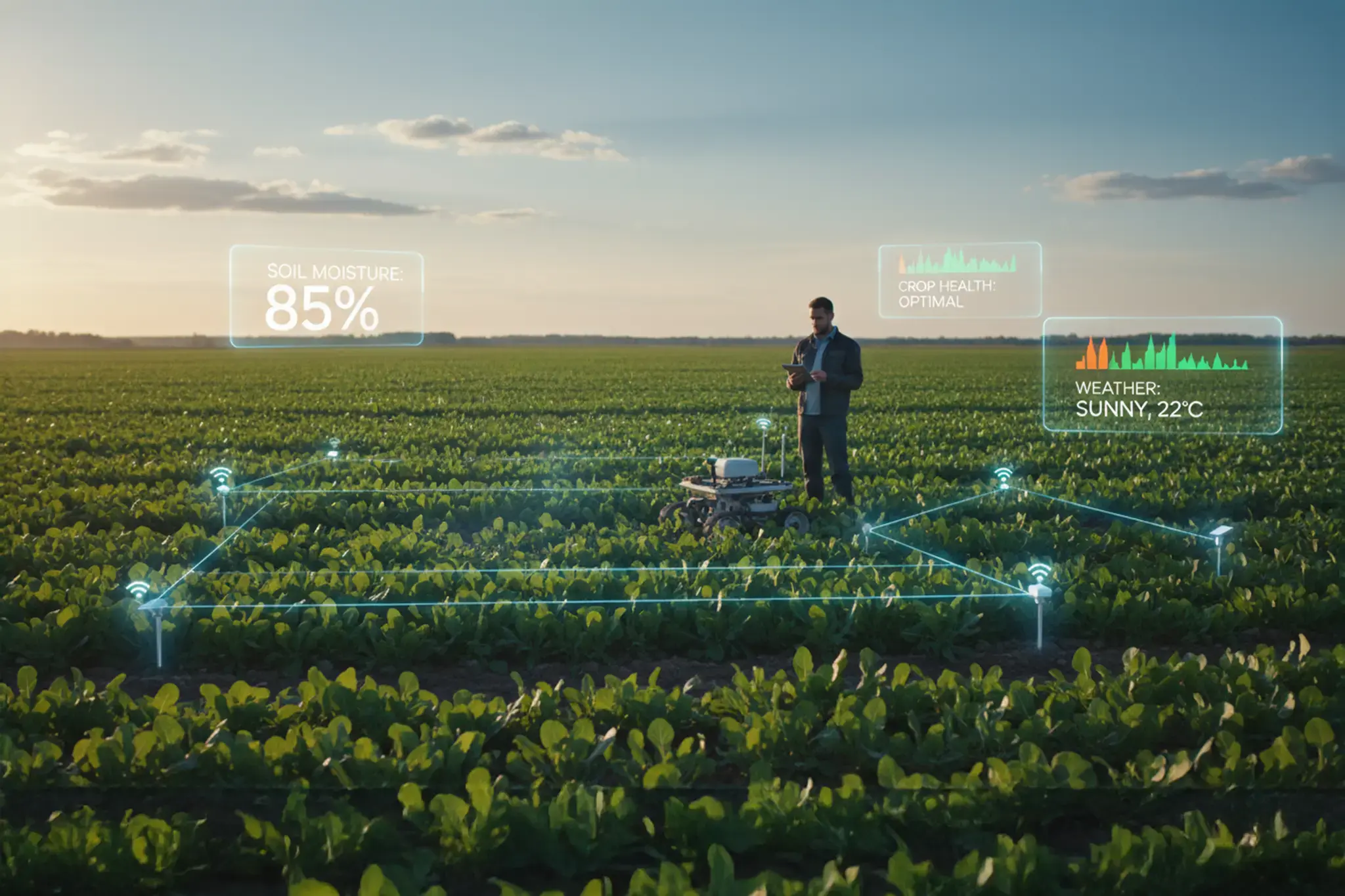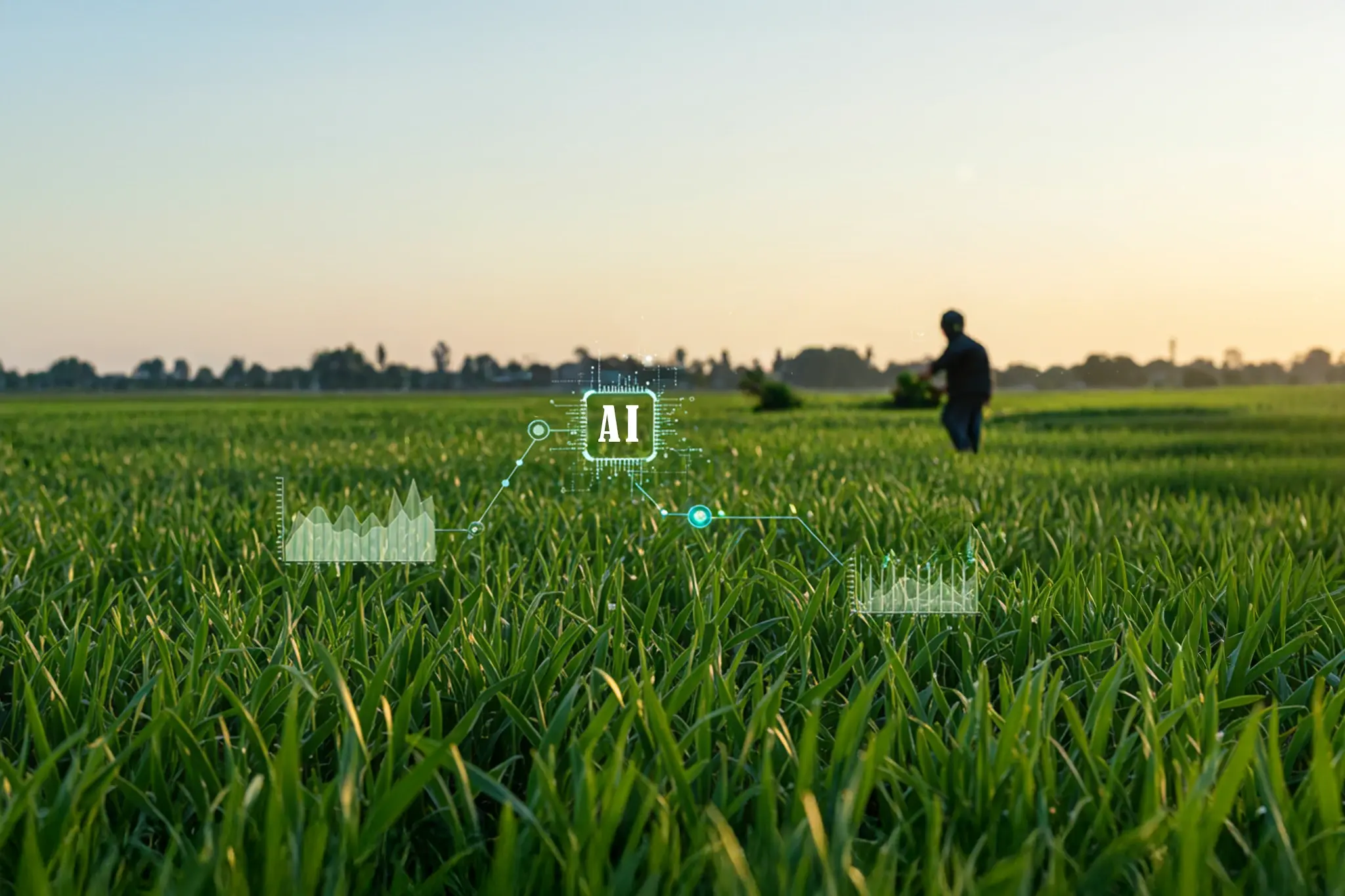Synopsis:
For food retailers, food processors, and CPG companies, the true supply chain challenge is no longer just what crops to procure, but where to reliably source them, and how to adjust! With escalating threats from climate change, geopolitical shifts, trade barriers, and regulations like EUDR causing critical crop shortages, this blog reveals how leveraging AI and data-powered sourcing intelligence allows businesses to strategically manage risks, expand cultivation, and build proactive food supply chain resilience. Read on to uncover how to transform from managing existing supply chains to anticipating disruptions and strategically mitigating them.
Consumers seldom think about the complex agri-food supply chain involved when they pick up a perfect bunch of grapes, a box of strawberries, or even the go-to pack of chips or chocolate bar. But, for food retailers, food processors, and CPG companies like yours, procurement teams are constantly fighting against an unpredictable reality: ever-increasing crop unavailability, market volatility, and cascading food supply chain disruptions. Are these just scattered incidents, or something more significant? The recent pressure on coffee, for instance, really highlights that traditional sourcing models are just not sufficient. For your business, you need to manage costs, but more importantly, shelves must be stocked, brand reputation protected, and, ultimately, promises made to customers delivered. In today’s landscape, food supply chain procurement demands a seismic operational shift, leveraging advanced sourcing intelligence to build genuine food supply chain resilience.
Some major food sourcing challenges:
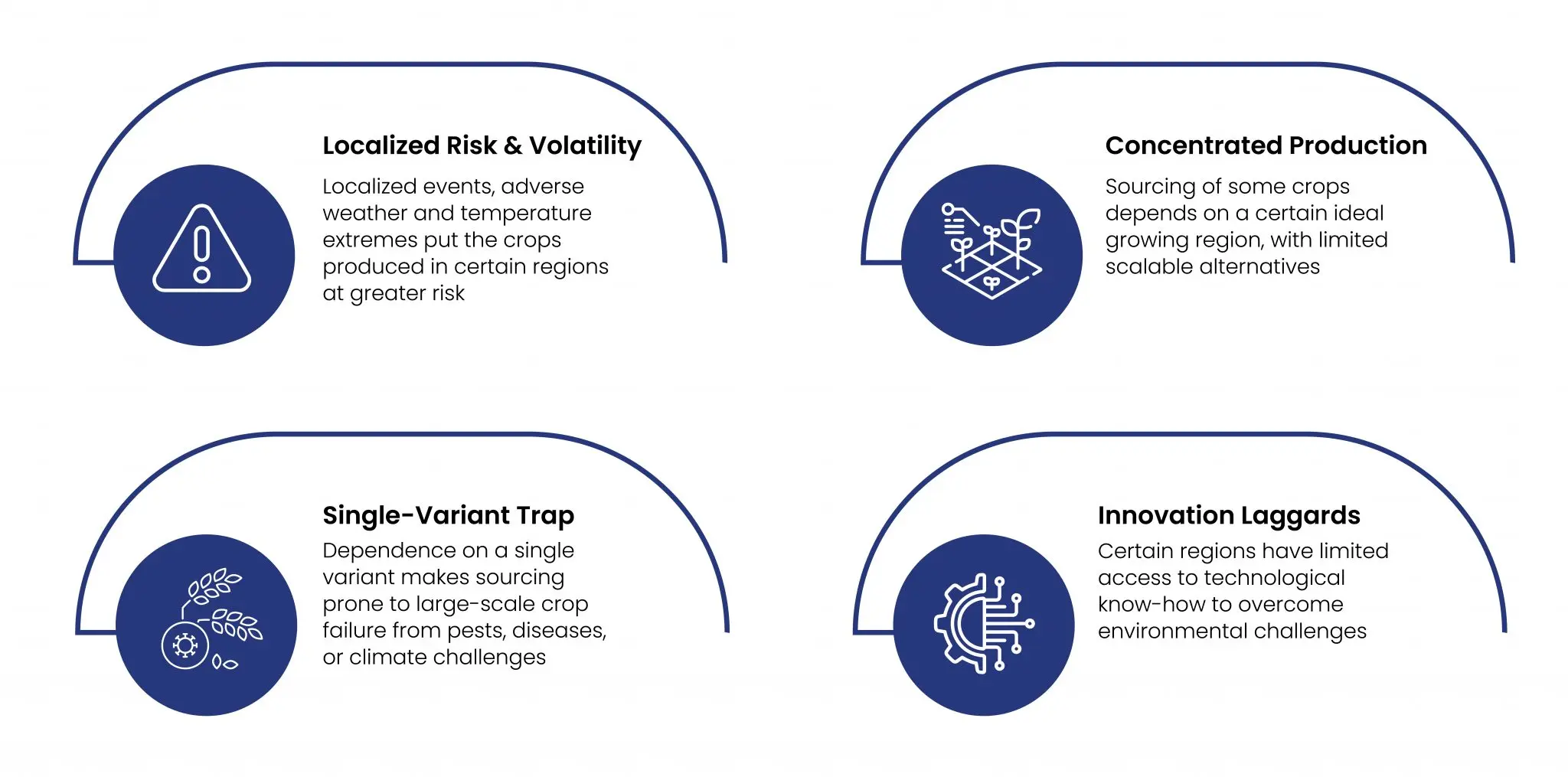
The “why now?” – escalating threats of crop unavailability
Crop shortage due to pests & diseases
Cases of crop unavailability of staples like coffee and banana are attributed to supply disruptions from increased demand, climate change, and the resultant rapid spread of disease, leading to localized or widespread crop failures. For instance, in West Africa—a region that produces over 60% of the global cocoa—unpredictable rainfall and infestations of brown rot and swollen shoot have resulted in a decline in cocoa bean production, most of which are exported to Europe and North America for processing and chocolate production.
Result? Spiraling cocoa prices touched nearly $13,000 per ton in December 2024 – an increase of 400% over the last ten-year average.
Impact of climate change on crops
According to the UN FAO estimates, climate change could lead to a severe drop in global crop yields by 2050. A recent study by BCG estimates that production levels worldwide could decline up to 35% across staple and non-staple crops by 2050 due to climate change.
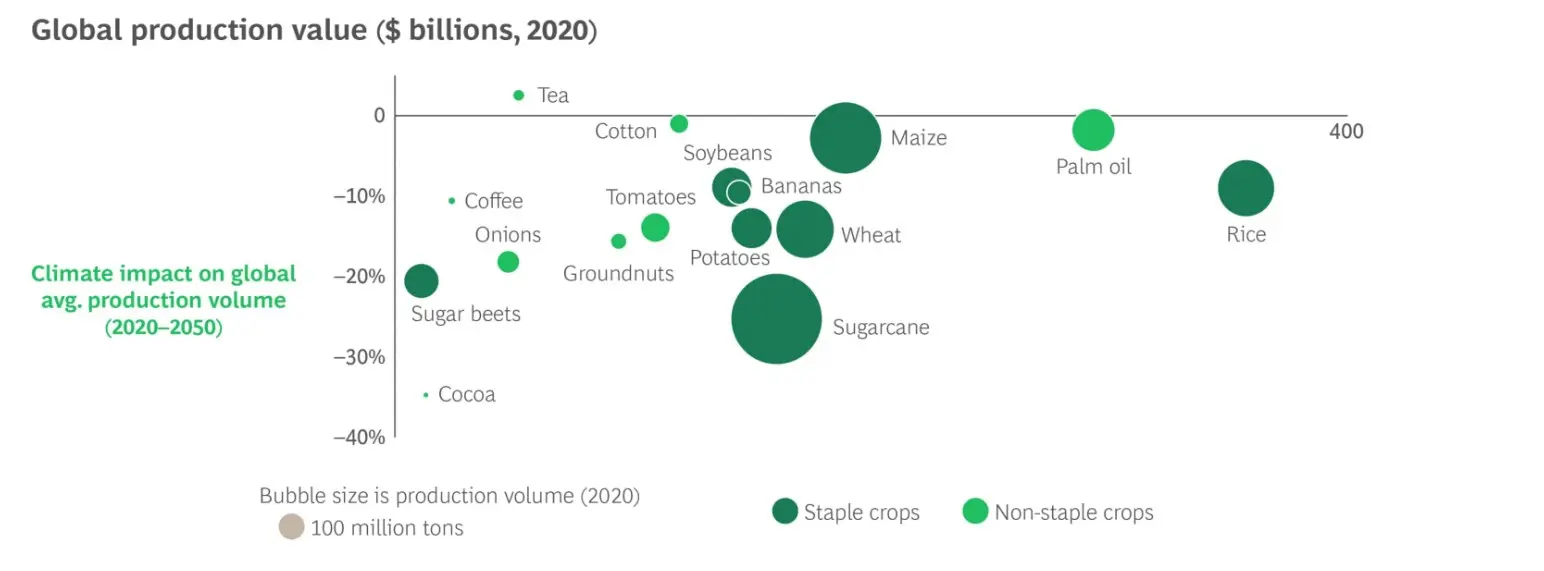
Multilevel disruption
Forget single disruptions! Agri-food supply chains today witness multiple shocks simultaneously. Take 2022, the global vegetable oil market saw a crisis. The Ukraine war affected sunflower oil exports, while severe droughts and heatwaves derailed production of palm oil in Thailand, soybeans in Brazil and Argentina, and canola in Canada. This was’nt a single issue. Geopolitical conflict along with climate-change-induced crop failures drove oil prices to historic highs. Managing individual risks pales in comparison to the immense challenge of these converging, multilevel disruptions.
The growing frequency of climate-related events, geopolitical uncertainty, trade restrictions, and tariffs, increases the likelihood of multilevel disruptions in existing agrifood production regions. The problem is, traditional sourcing models, which rely on historical data, manual assessments, or limited supplier pools. What they fundamentally lack is crucial supply chain visibility at the farm level and the sheer agility needed to navigate these incredibly complex, converging challenges. Managing multilevel crises demands an entirely new approach. It’s time to uncover the new: proactive, data-driven sourcing intelligence. Discover how reimagining your geographic sourcing strategy can transform vulnerability into a lasting competitive advantage, ultimately enhancing food security solutions.
Steps to build supply chain resilience:
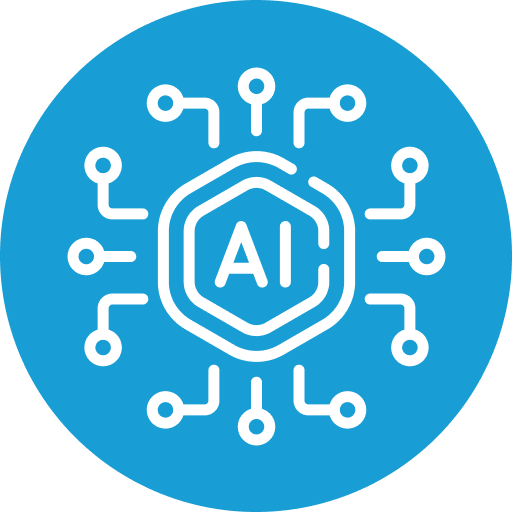
Building predictive AI capabilities by implementing technologies that help adopt precision agriculture, predict, climate shifts and severe weather events to improve yield.
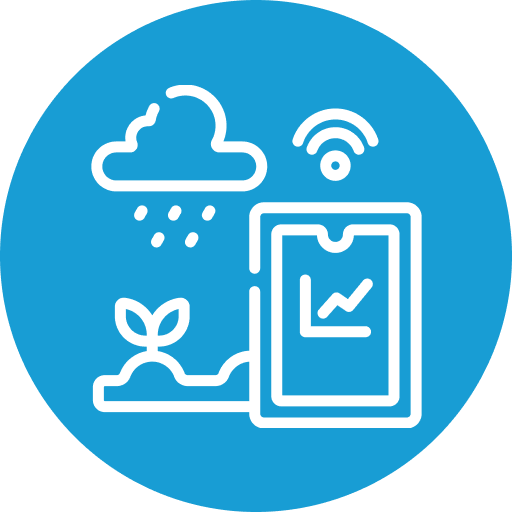
A shift to climate-smart farming, the adoption of sustainable & regenerative agriculture, to build long-term resilience.
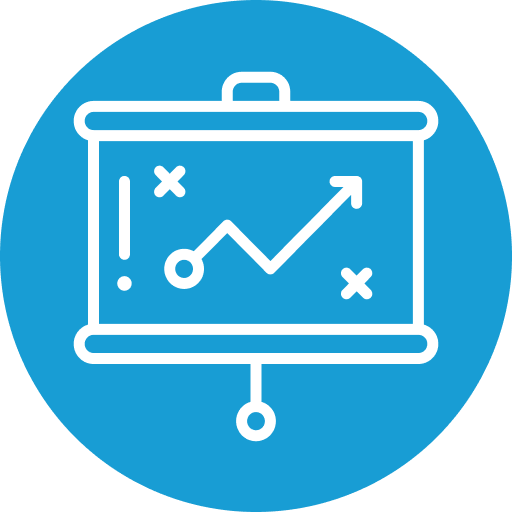
Expanding & adjusting sourcing strategies by diversifying and reducing reliance on vulnerable crops and regions.
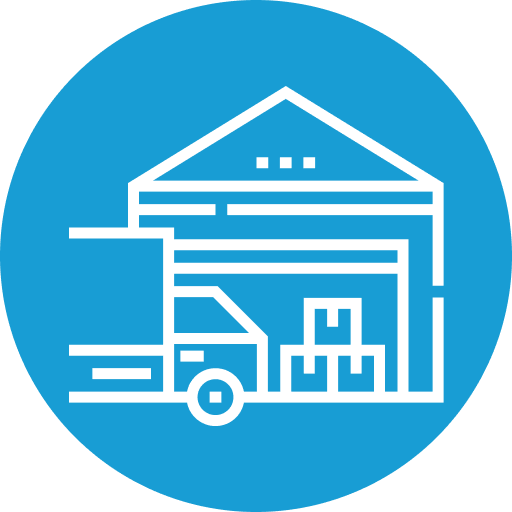
Optimizing logistics. Investing in the reshoring or nearshoring of food production to shorten supply chains.
The new paradigm: proactive intelligence and strategic sourcing
It is clear that to achieve true food supply chain resilience, a transformation away from simply responding to crop unavailability towards proactive strategies is vital. This means:
- Anticipating challenges
- Actively mitigating risks
- Strategically building robust long-term capabilities
With this proactive approach, the agri-food supply chain can withstand shocks and leverage foresight to thrive.
Predictive analytics for food supply chain resilience
The foundation for this transformative shift lies in data analytics to derive agri-intelligence at the farm and regional levels for
- Near real-time farm-level data insights for decision-making
- Anticipating climate change impacts on crops
- Deploying disease early warning systems for timely mitigation
- Identifying the right land optimal for specific crop varieties
- Using seed variants resilient to climate shifts
- Strategically positioning for efficient logistics
For food retailers, food processors, and CPG companies, this means smart sourcing intelligence and targeted geographic expansion, moving beyond conventional supplier relationships to build robust food supply chain resilience. Powered by the unparalleled capabilities of AI in agriculture and advanced data analytics, procurement teams can also gain comprehensive insights into harvests during the season, enabling proactive alternative sourcing when needed.
Smart and scalable sourcing for the future
Such advanced systems excel at connecting disparate information sources. They process complex data points like long-term climate models, soil health, historical yield forecasting, and land use monitoring. By overlaying these datasets, AI provides insights into crop suitability, yield potential, risk mitigation, and other factors, enabling a robust food supply chain risk mitigation strategy. This deep understanding allows decision-makers to secure existing supply and confidently develop new, sustainable, resilient regional sourcing hubs for the future.
Farm-level data for yield forecasting
Complete visibility of granular farm-level data is crucial for optimizing input resource usage and thereby reducing costs, as well as improving both the quality and quantity of produce. Cropin’s deep learning models deliver near real-time visibility, risk mitigation, and forecasting intelligence, leveraging historical data, weather insights, and satellite imagery of the field captured. Procurement teams can monitor farms in near real-time during the season without disturbing on-field activities. They can gain insights into crop stage and health, receive pin code-level weather alerts, access climate-smart advisories, irrigation advisories, pest and disease alerts, and more. Regular predictive analytics of crop yield forecasts throughout the season alert procurement teams about potential shortages, enabling them to plan well in advance and avert supply shortages. While, the pre- and post-season analyses are crucial for planning. This intelligence guides optimized resource utilization in new cultivation zones, ensuring sustainable sourcing and cost-efficiency.
Regional intelligence for geographic expansion
Agri-food tech platform Cropin empowers stakeholders in their assessment of new regions for geographic expansion. Our advanced AI and ML models overlay an array of datasets to derive advanced, precise predictions of the exact quantity and quality of your key commodities. Our models estimate early sowing trends, raise pests and disease alerts, and identify causes for yield drops, providing granular insights that enhance preparedness and responsiveness. Let’s explore a few key insights that Cropin offers.
Cropin’s continuous satellite monitoring reveals untapped agricultural potential, identifies land conversion (including deforestation), and tracks whether arable land is cultivated or left fallow for the season, even in remote areas.
Cropin’s dynamic LULC (land use land cover) map is used to identify the active agricultural area of a region. Cropin’s AI models estimate the acreage of a specific crop using vegetation indices data from satellite imagery and our proprietary crop knowledge graph. The next intelligence required is the assessment of new regions that are best suited for specific seed varieties. For this, Cropin’s AI models offer comprehensive Crop Suitability Analysis based on specific crop requirements, climate models, soil health, and water availability. Before expansion for sourcing procurement teams require vital information on the yield potential of a new region. Cropin’s AI-driven models also provide the yield potential of a given region and accurate yield estimates. These insights help reduce sourcing risks and enable confident expansion decisions.
Climate risk is a constant in cultivation. To minimize widespread losses and secure your perishable supply chain, Cropin offers the following insights for the region of interest:
- Drought – derived from precipitation and potential evapotranspiration
- Accumulated precipitation over an indicated timeframe
- Forecast of extreme events, temperature, heat wave
- Relative humidity and associated risks
- Water stress
Cropin models provide early disease warnings that predict risk occurrences, taking into account weather parameters such as humidity, temperature, and precipitation. It provides the percentage probability of disease occurrence at 5×5 km resolution.
Crop health, evaluated through time series analysis of the greenness index for the current season compared to the long-term normal, provides a vital clue to understanding quality and yield.
Growing Degree Days is used to derive Harvest Window Estimation, which offers insights into the deviation of the number of days from the typical harvest window. This information is vital for harvest planning and logistics management.
Cropin Sage: Cropin Sage, powered by Google Gemini, converts the agricultural world into a proprietary grid-based map, offering data and intelligence like never before, with unmatched scale, accuracy, and speed. It’s not just about past data; Sage employs advanced AI to actively forecast future yields. It can identify the perfect locations and most favorable conditions for growing crops globally, directly strengthening our food system’s resilience. Decision-makers can pose questions concerning crop performance and lifecycle, gaining precise insights into productivity, climate variables, farming practices, soil characteristics, and more on Cropin Sage. They can explore a region’s historical crop success, understand the specific weather impacts, and assess crop suitability for optimal yields in light of evolving climate patterns. This highly granular, regional-level intelligence is crucial for effective food production planning.
What could these predictive analytics mean food supply chain?
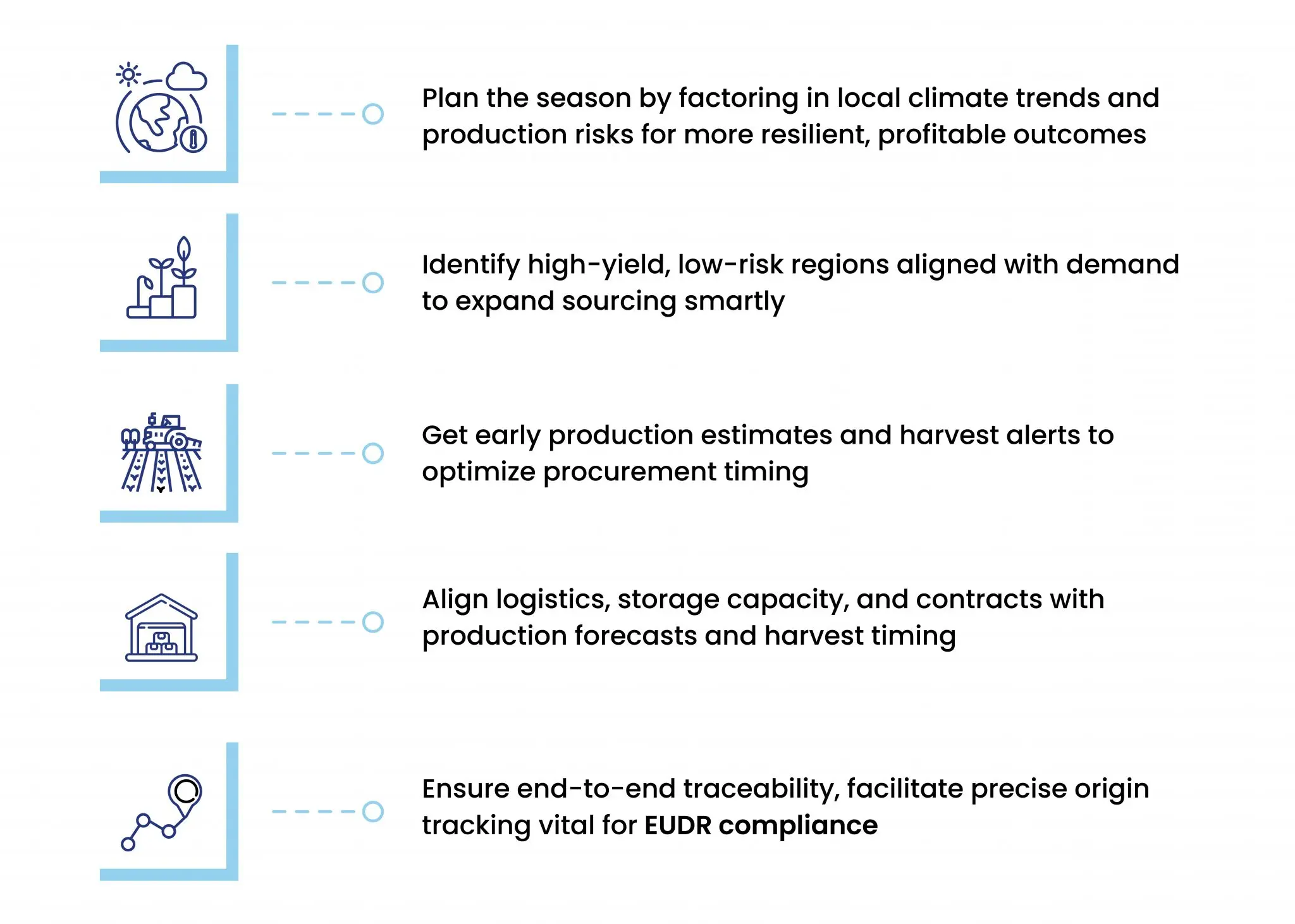
Driving risk mitigation and cultivating food supply chain resilience
Moving beyond merely identifying challenges, Cropin empowers food retailers, food processors, and CPG companies to proactively build food supply chain resilience. Our platform delivers comprehensive visibility for strategic sourcing, offering real-time, granular insights even in new or prospective regional sourcing geographies. This granular supply chain visibility (agriculture) enables truly informed supplier identification and qualification, critical for confident geographic expansion. Our platform goes beyond basic adherence, enabling robust sustainability verification for practices like deforestation-free or regenerative agriculture.
Real-world application of AI in agriculture
To strengthen its fresh produce supply chain, Walmart chose Cropin’s AI-powered platform. This collaboration will improve their ability to forecast yields, monitor crop health, and predict seasonal transitions with greater accuracy across the U.S. and South American markets. This strategic partnership aims to proactively manage risks, ensuring a consistent supply of high-quality perishables and leading to improved shelf fill and reduced waste.
PepsiCo deploys the Cropin platform to gain plot-level near-real-time agri-intelligence. This ensures a stable raw material supply, predictable quality, minimized operational disruptions, climate-smart farming, and optimized inventory management. Separately, another major potato producer employed Cropin to gather regional intelligence, pinpointing new cultivation areas for expansion.
In conclusion, the volatility is here to stay. Given the scale of the challenges, sourcing intelligence is not optional; it is the most effective way forward. Building resilience does not happen overnight. Risk assessments must be embedded into everyday procurement decisions and revisited frequently to account for shifting conditions. A structured, predictive approach to risk management is key to unlocking sustainable profitability. It helps companies secure a strong competitive advantage, building a business that can genuinely thrive for years to come.

